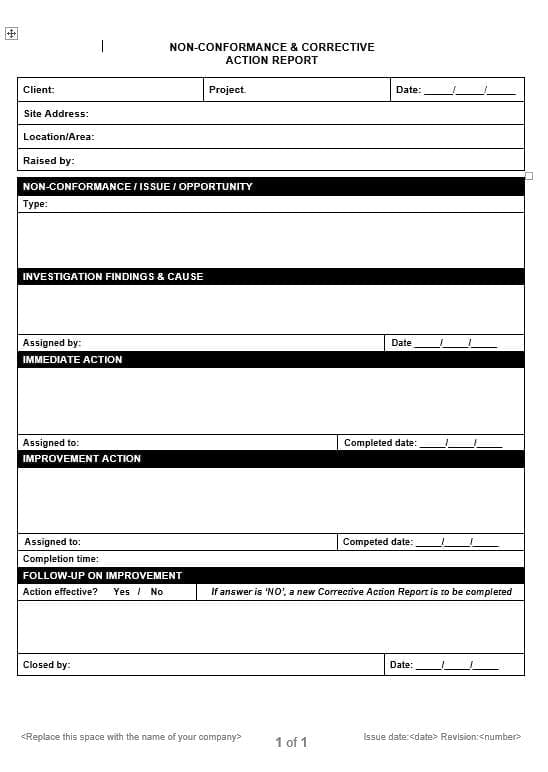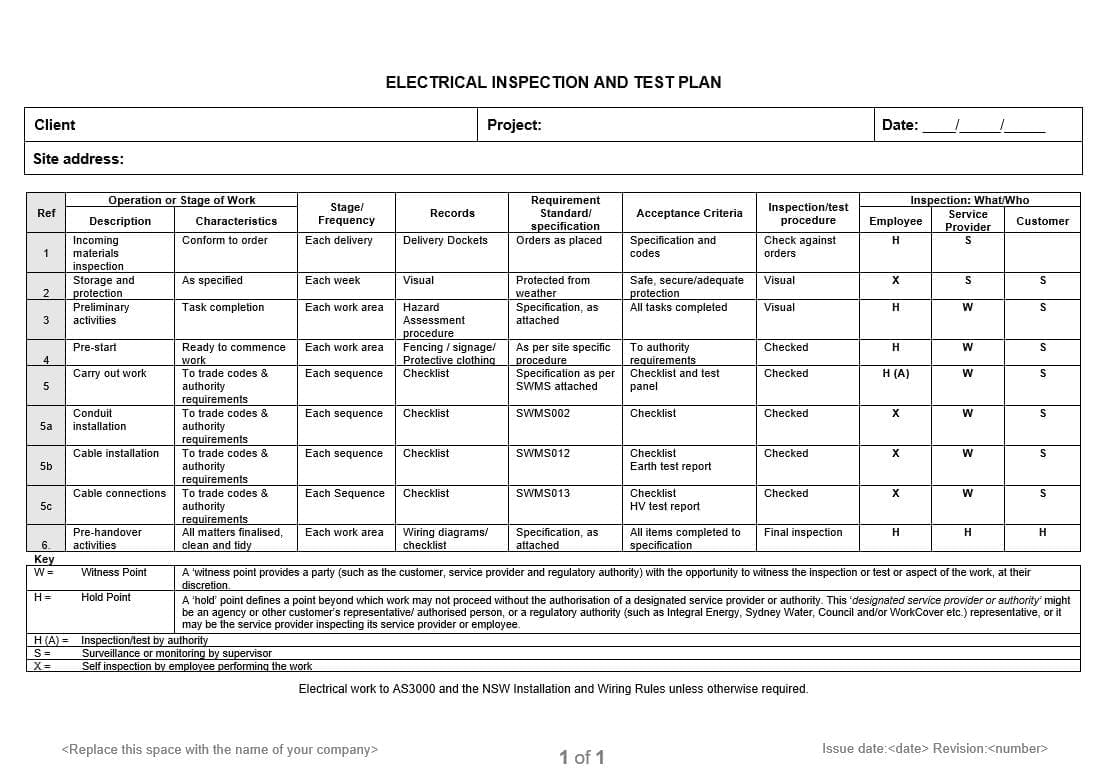You've heard the term 'Inspection Test Plan' thrown around on site, but what exactly does it mean? As a tradesman, ensuring high quality work is one of your top priorities, and ITPs help make sure construction projects progress as they should.
An ITP is a key part of the overall Quality Management Plan for a build and helps guarantee that what's been specified by the client is what's actually delivered. By following the ITP, you'll have the details for testing and inspecting your work at each stage of the job. Far from just another piece of paperwork, ITPs give you a roadmap to providing a top-notch finished product that will keep your customers coming back.
Read on to demystify ITPs and learn how they can help you and your team achieve construction excellence.
What Is an ITP (Inspection Test Plan)?
An ITP, or Inspection Test Plan, is a document used in construction to plan and record inspection, testing, and quality control. In layman's terms, it's a schedule that ensures important quality checks are carried out during critical stages of a build.
As a tradesman, producing top-quality work is one of your top priorities. ITPs help guarantee your construction projects progress as intended and meet customer expectations. They form part of an overall Construction Quality Management Plan (CQMP) covering all quality requirements for a job.
An ITP typically contains:
- Details of inspections and tests required, including who will do them and when.
- Specific inspection criteria and acceptance standards to be met.
- Forms for recording inspection results and any corrective actions needed.
- Sign-off sections to verify inspections and tests were completed satisfactorily.
Following the ITP helps identify any defects early and ensure they're rectified promptly. This avoids wasted time, money, and materials from having to make corrections later on. ITPs provide confidence in the quality and workmanship of the final build.
For you as a tradesperson, ITPs serve as a useful checklist to keep you on schedule. They minimise the risk of important quality checks being missed or forgotten about. Clients and certifiers also rely on ITP sign-offs as evidence proper processes were followed.
Keeping accurate ITP records demonstrates your professionalism and commitment to quality. It gives you tangible proof of a job well done and a satisfied customer. That's what being in the trades is all about.
Why Are ITPs Important in Construction?
So why are ITPs such an important part of construction quality assurance? For starters, they help ensure that what's being built actually meets the required standards. No one wants to end up with a building that's structurally unsound or doesn't function as intended!
ITPs also provide step-by-step guidance for tradespeople to follow. This helps eliminate confusion and prevents mistakes, oversights or skipped steps. With a detailed ITP in hand, workers know exactly what needs to be checked and tested at each stage.
Clear communication
ITPs facilitate clear communication between all parties involved in a construction project. This includes architects, engineers, builders, contractors, subcontractors, and building inspectors. Everyone is on the same page regarding the quality expectations, testing procedures, and sign-offs required for each part of the build.
An ITP acts as a permanent record of the quality checks and inspections carried out. This provides assurance that the necessary verifications were done to the required standard. ITP records also make it easy to track the progress of a project and identify any areas that need re-inspection.
In summary, ITPs are invaluable for managing quality, efficiency, safety, and compliance in construction. They give key stakeholders confidence that the end result will be a high-quality building that meets all necessary standards. For builders, ITPs are essential tools for delivering superior workmanship and service.
When Are ITPs Used in a Construction Project?
Inspection Test Plans (ITPs) are crucial quality assurance tools used at various stages of a construction project. As a tradesperson, ITPs help ensure you provide high quality work that meets project specifications.
When do ITPs come into play on a job site? Quite frequently, actually.
Pre-construction
Before work begins, ITPs establish quality standards and the inspections required. They determine materials, workmanship, and safety criteria to be met. These plans guide how the project will unfold to achieve the desired outcomes.
During key stages
At pivotal points, ITPs verify work is progressing properly. Things like base stage (foundation work), frame stage (structural elements, mechanical/electrical installations), enclose stage, waterproofing stage, fixing stage (fixout, tiling and cabinetetry installed) and practical completion are inspected and signed off. This confirms requirements have been satisfied before continuing to the next phase.
Final inspections
The final ITP confirms all criteria in the QMP have been fulfilled. Once signed off, the completed works can be officially handed over to the client. Defects liability periods then ensure any issues are remedied.
ITPs instil confidence in builders, clients and certifiers that construction meets approved standards. While they involve extra documentation, ITPs save time, money and headaches by identifying problems early on. They ultimately lead to higher quality projects that satisfy all parties.
Including ITPs in your jobs helps establish you as a knowledgeable, detail-oriented tradesperson devoted to excellence. So make sure you understand the ITPs for your work and do your part to support the construction quality plan. Your efforts will be appreciated by builders, clients and building surveyors alike.

Who Is Responsible for ITPs?
When it comes to ITPs, several roles and responsibilities come into play. As a tradesperson, you'll likely be heavily involved in developing and following ITPs. But you're not alone - a whole team works together to ensure quality assurance.
Contractors
The main contractor or builder is ultimately responsible for the overall ITPs on a construction project. They appoint supervisors to oversee the tradesmen and subcontractors. The contractors will review and approve all ITPs before work commences.
Supervisors
Site supervisors, foremen, and project managers directly manage the daily activities on the worksite. They ensure all tradesmen and subcontractors are adhering to the approved ITPs. Supervisors are responsible for scheduling inspections, tests and holding regular site meetings to discuss the progress of ITPs. They also report back to the contractors regarding any issues.
Tradesmen
As a tradesman, electrician, plumber or other specialist, you are responsible for developing ITPs that cover the specific work you will carry out. This includes identifying key inspection and test points, and the methods you will use. You must then follow the ITPs as work proceeds and conduct all necessary inspections and tests. Any failed tests or non-conformances must be reported to your supervisor immediately.
Third Parties
Independent inspectors or certifiers may also be involved in reviewing and approving certain ITPs, especially where specialist work is concerned. They can conduct both routine and random site inspections to check ITPs are being properly followed.
While ITPs help provide clarity around roles and responsibilities, communication and collaboration between all parties is key. Regular discussions, meetings and reviews are needed to ensure the successful development, implementation and completion of ITPs. When everyone works together, ITPs become a useful tool for quality management rather than an unnecessary hassle.
How to Create an Effective ITP
To create an effective Inspection Test Plan (ITP), you need to put in the work upfront. An ITP will be your guide for quality control on site, so taking the time to get it right will make the construction process run more smoothly.
Start by reviewing the specifications and drawings for the job. Make note of any quality requirements or standards that must be met. Next, break the work into logical sections or stages. This could be by floor, room type, or trade. Then determine the key inspection and test points within each stage. These should include things like steelwork inspections, pipe pressure tests, or electrical circuit tests.
For each inspection point, provide clear and detailed instructions. Explain what is being inspected, the inspection criteria, who will do the inspection, and sign-off requirements. Be very specific about things like measurement tolerances or performance benchmarks that must be achieved.
Once you have the main inspection points mapped out, don’t forget the final inspections. Plan for overall site inspections at the completion of each trade as well as a final pre-handover inspection. These give you an opportunity to pick up on any issues early and ensure all previous stages have been signed off correctly.
A thorough ITP will give your client confidence in the quality of workmanship and help avoid costly rectification work later on. However, an ITP is a living document. As the job progresses, you may need to modify inspection points or re-sequence stages. Make any changes official by updating the ITP and ensuring relevant parties have the latest copy on hand.
Keeping quality top of mind at every stage of construction is key. Put in the work to create a comprehensive ITP, and then diligently implement and update it as needed. Your well-built outcome will speak for itself.
Conclusion
By now, you should feel more at ease with what an ITP actually entails and why they matter so much. Keep this information in mind for your next build - your customers will surely appreciate the extra care and diligence that goes into ensuring high quality work. And when the final inspection rolls around, you'll rest easy knowing you've dotted all your I's and crossed all your T's according to the plan. ITPs take the mystery out of the construction process so you can focus on what really matters: crafting quality structures that stand the test of time.







